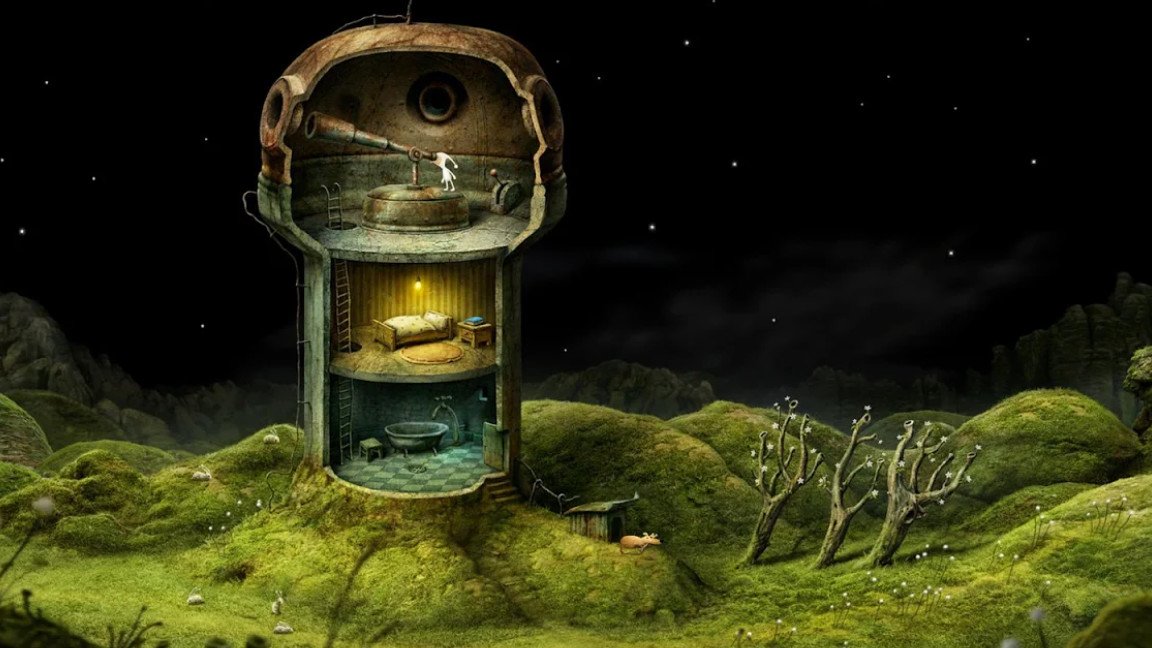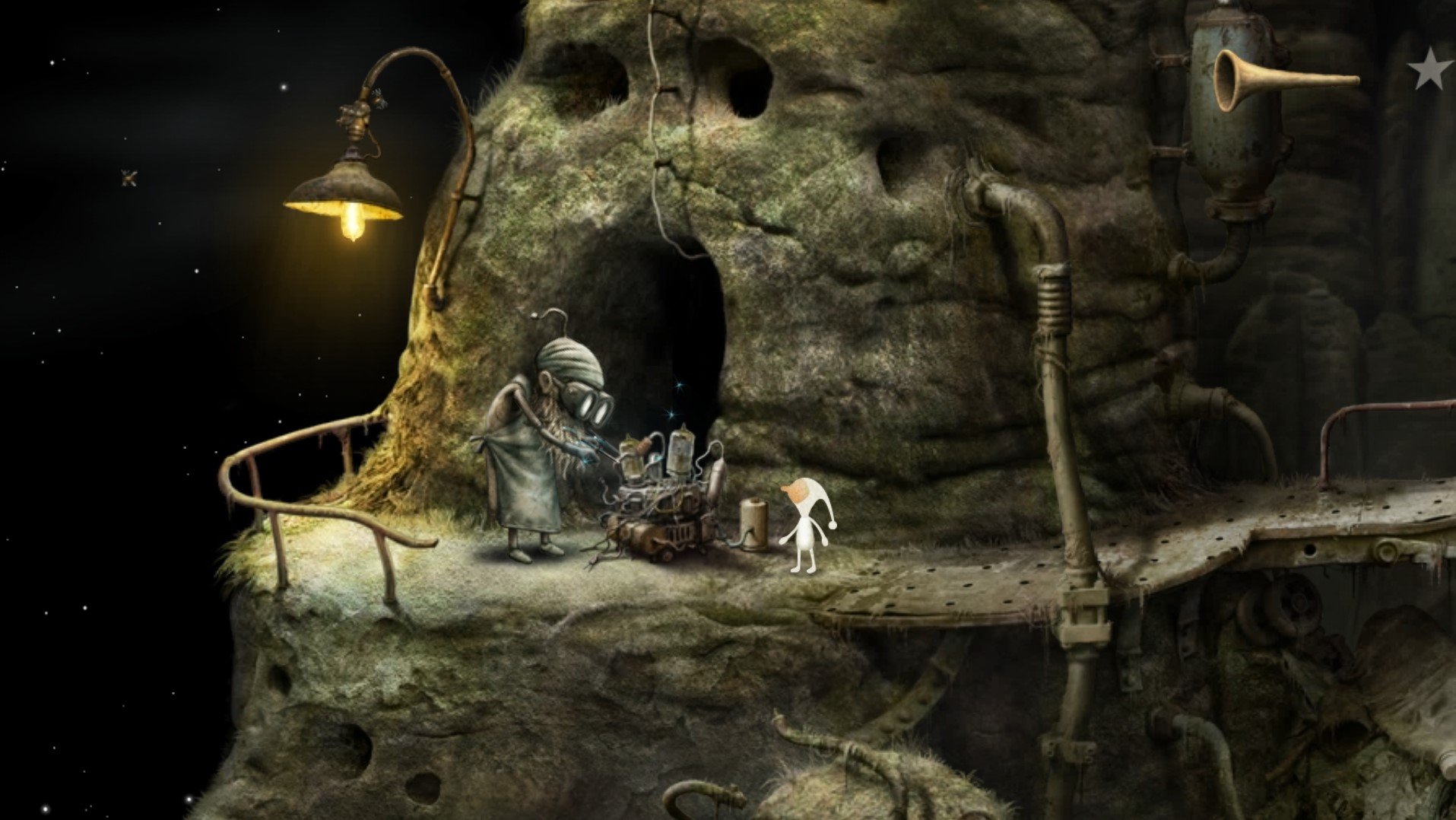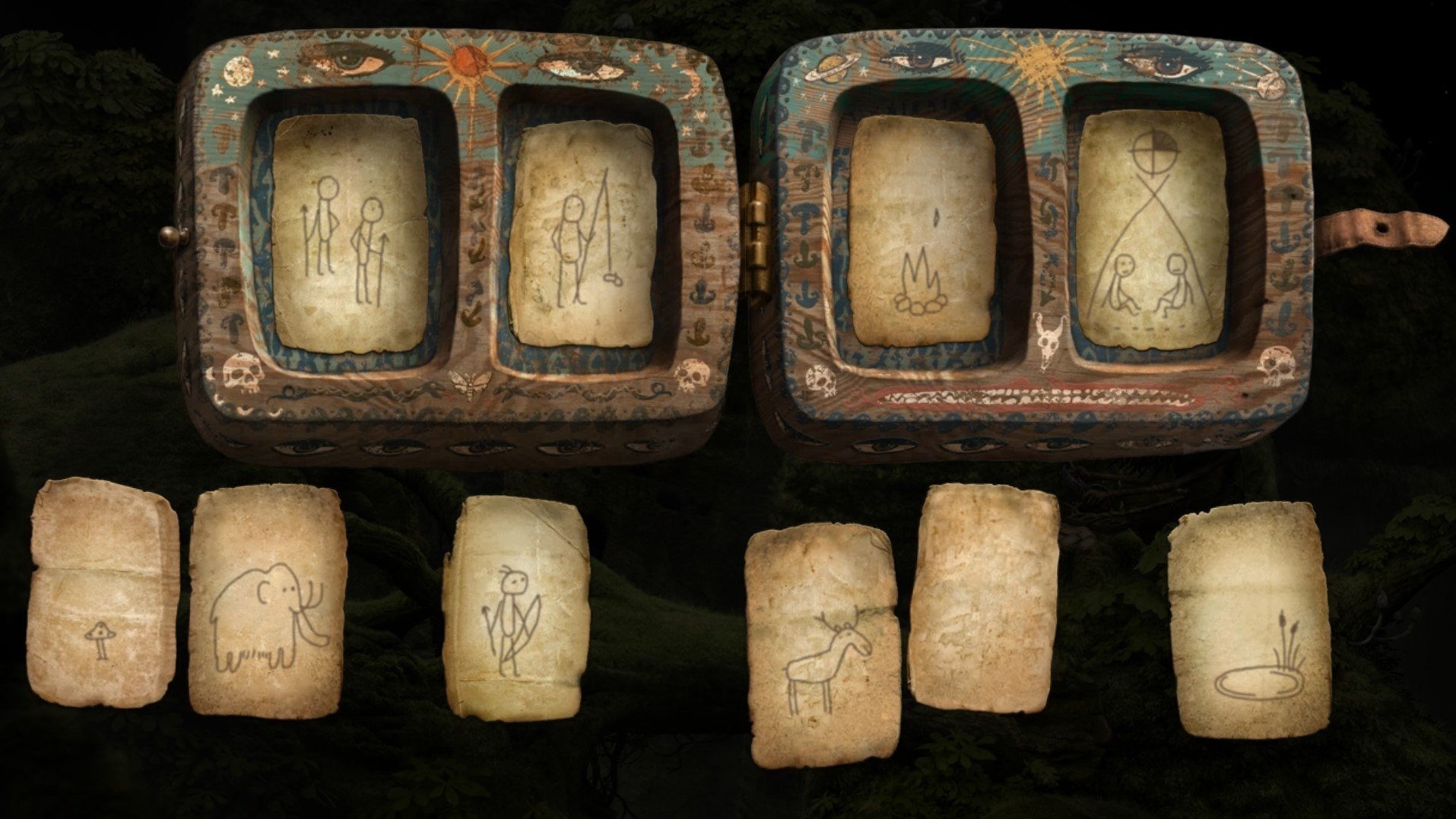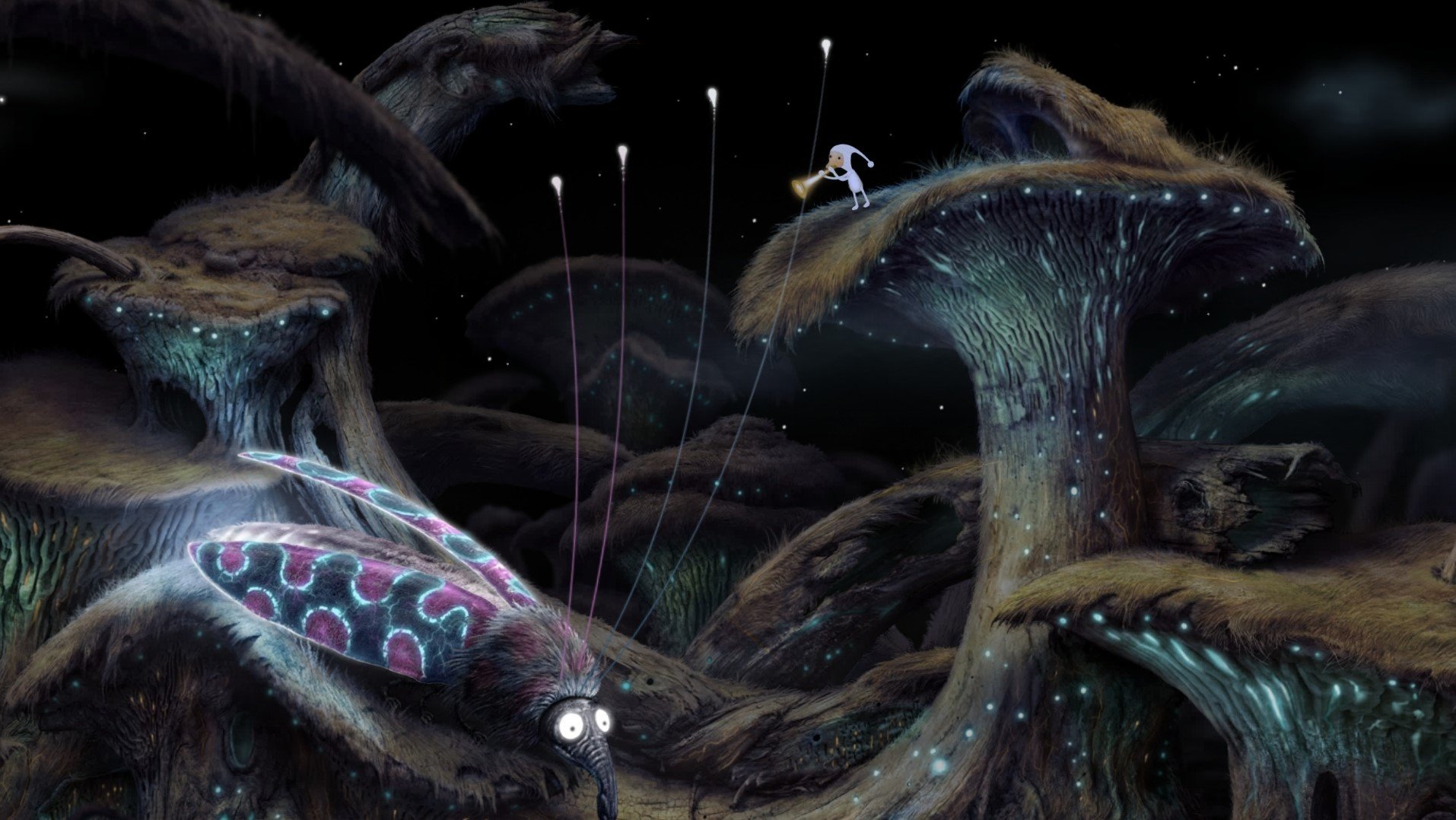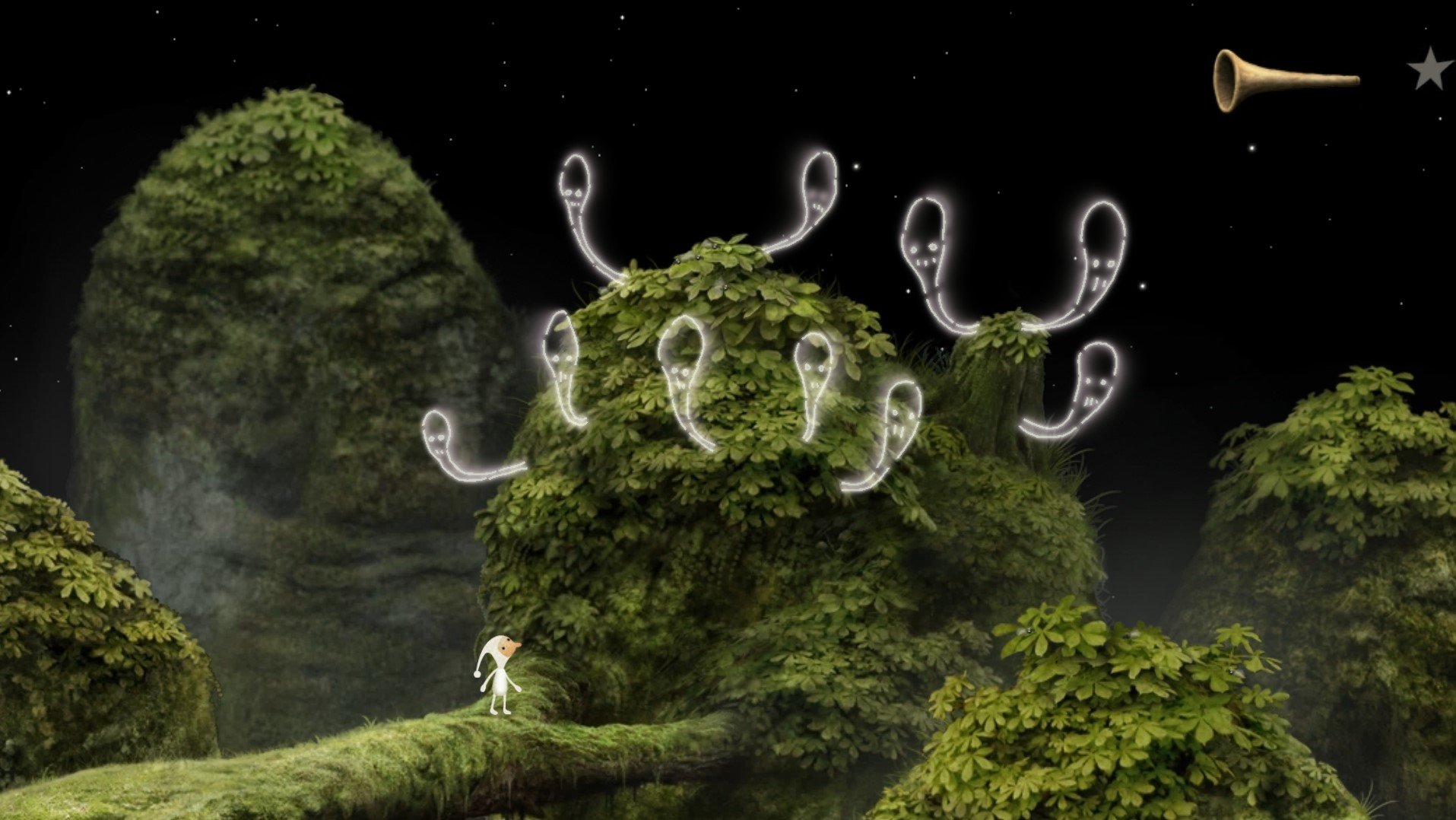Samorost 3 is the most visually striking mobile game I've played in years
Is music the missing puzzle piece in the mystery of the universe?
I've been playing a lot of newer games recently, so this week I thought I'd sift through the bottomless abyss of games I missed to try and find any lost treasures. Boy howdy, did I find a doozy of a game in Samorost 3!
Samorost 3 gives me a feeling that is profoundly hard to describe. Samorost is beautiful, whimsical, intricate and charming. And yet it is also somehow disturbing. Maybe it's the muted color palette. Maybe it's the feeling of isolation that you get from thinking about the emptiness of space for too long. Maybe it's that so many things in this strange little world appear to be covered in hair. Whatever it is that makes Samorost so unique, it leaves an unmistakable impression in its wake. This is best Android games quality we're talking about here, folks.
The development team has stated that it drew inspiration for Samorost's art direction from the animated works of Yuriy Norshteyn, one of the most famous Russian animators of all time. If you're familiar with Norshteyn's works, like Tale of Tales and Hedgehog in the Fog, you'll see the influence in Samorost immediately and it adds a ton of value in the weird but beautiful department.
Samorost 3 and its predecessors, Samorost 1 and 2, are beautiful point-and-click puzzle adventure games from Czech indie developer Amanita Design. You may have seen Amanita's work before thanks to one of their better-known games, Machinarium. Samorost and Machinarium share a few common factors, like their intricate art styles and extremely detailed settings, but Samorost 3 distinguishes itself with its endearing story and fascinating inclusion of music. You won't need a controller to enjoy this game, but you could definitely get more out of it with a killer pair of earbuds.
Samorost 3 kicks off with a curious bang. Our little friend the gnome and his dog (both of whom hail from the previous Samorost games) are having a peaceful day on their home planet when a flute just falls right out of the sky. Picking up the flute, the gnome uses it to listen more intently to the world around him and to play beautiful tunes to communicate with others. Other than the occasional "hello" or "thanks" in Czech, there is no dialogue in Samorost. For the most part, emotion is expressed through moans, groans, o-ho-hos, and a-has. These brief bits of voice acting and many of the game's weirder sound effects were done by the developers just making odd noises into microphones. It's a shockingly effective technique and it lends the game a singular atmosphere.
The gameplay is very simple, you just tap the screen to move your gnome around and find things to interact with. You do have a very small inventory, mainly to hold your trumpet and just a couple of other bits and bobs you'll come across now and then. These minimal tools are all your gnome needs to get down to some serious adventuring.
The gameplay is simple, just tap the screen to move your gnome around and find things to interact with.
In his observatory home, the gnome finds a picture book that depicts the strange account of a planet-eating space octopus attacking some monks. Through these illustrated panels, you find that the monks commissioned an engineer to build them a giant robot knight to fight the incoming octopus threat and that they also used the same flutes that the gnome now has to do...something. Honestly, it was kind of hard to tell exactly what the book was depicting, but I got the gist. And the gnome, now armed with his magic flute, can set out on his epic quest to visit nearby planets and moons.
As you guide the gnome on his journey through the stars, you'll have to solve environmental puzzles to progress and help out the strange critters you encounter along the way. For example, one of the first puzzlers you'll come across is the need to build the gnome a little spaceship. This is where the intricacy of the setting really comes into play, as you'll need to take careful note of your surroundings to discover what you can and cannot interact with. Even something as mundane as a bathtub may actually wind up being necessary later, so thorough exploration is a big key to success here.
One of my few complaints about the game is that early on some of the puzzles can feel very opaque. I actually got stuck very early trying to cross a chasm because I could not figure out how to create a bridge to get across. I had to look up the answer in a walkthrough, and the solution was bizarre enough that I didn't feel that bad for not being able to figure it out.
The puzzles can be challenging, but you get the hang of the game's logic pretty quickly.
Once I'd solved the first few puzzles I started to get a better grasp on the game's logic and wound up more intuitively knowing what types of inputs and interactions were likely to yield results later on. Once you get the hang of the game's flow, the later puzzles become easier to understand. I can also say that the puzzles don't really get harder as you progress, they just keep coming at a steady clip to keep you engaged and invested in the gnome's journey.
The real joy of these puzzles though is just getting to bask in the incredible worlds that Amanita have created. There are 45 screens making up Samorost 3 and there's a certain feeling of scale these sets impart that makes you question if the gnome is actually "in space" or if he and his entire world are just so tiny that everything feels like it's set in the vast void of the cosmos. Traveling to new planets and moons is exciting every time, as you have no idea what you'll find when you get there.
Each setting is unique and has an incredible amount of artistry behind it.
Each setting is unique and vibrant in its own way. Some are lush green forest landscapes, others are desolate barren asteroids, but all have a stunning amount of artistry behind them. There's also a wonderful element of surprise and delight when you successfully solve a puzzle and get a song out of it. The solution to most puzzles leads the gnome to play beautiful music on that magic flute of his and the brief cutscenes that accompany these victories have a dreamlike, surreal quality to them that I can't get enough of.
Samorost 3 is $4.99, which may seem a little steep for a mobile game, but it's worth mentioning that this is a big discount from the $20 price tag on Steam. This is actually the first game in the series to be made into a full-length game at 6-8 hours of play time. For the visuals alone, this game is absolutely worth a try. I can't name a single other game that I would want gallery-quality prints of every last location. The puzzles are great brain teasers, the exploration of other worlds doesn't get old, and the music is truly stellar. Samorost 3 is definitely worth a try, especially for art and animation lovers.
Samorost 3Samorost 3 is an interactive artistic masterpiece with clever logic puzzles, a gorgeous soundtrack, and charm out the wazoo.
